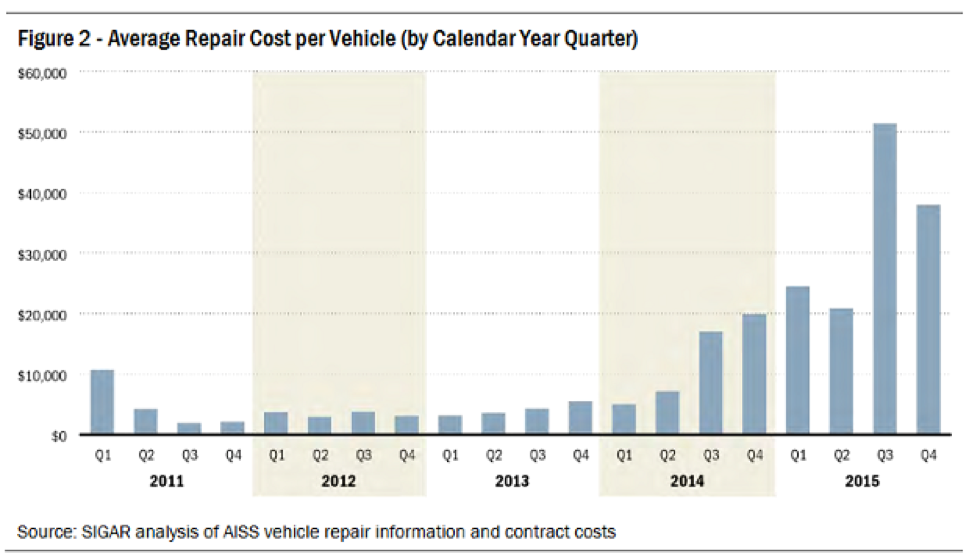It began five years ago as a multi-million-dollar U.S. program to maintain tens of thousands of military vehicles for the Afghanistan Army, but then grew in cost amid rampant mismanagement and waste.
The five-year contract originally cost $182 million, but that cost steadily grew to $423 million after the Afghanistan Army vehicle maintenance operation failed to meet basic requirements and the Department of Defense declined to demand improvements or seek repayment of funds, according to a new government audit.
Related: A $335 Million Power Plant in Afghanistan That Can Barely Turn on Lightbulb
As the contract costs grew, the amount of work being done declined sharply. Maintenance work on the 26,000 military vehicle fleet dropped from 3,072 repairs and parts replacements in mid-2012 to just 82 in late 2015.
The original plan was for the Afghanistan National Army to gradually assume full responsibility for maintaining the fleet of tanks, trucks and other vehicles that had cost U.S. taxpayers $6.5 billion, but that seems unlikely now. With the original contract about the expire and the maintenance system in a crisis, the Department of Defense will likely have to lock in another five-year contract, this time costing at least $1 billion over five years.

The DOD’s contract and vehicle maintenance travails in war-torn Afghanistan was chronicled in a new audit by the Special Inspector General of Afghanistan Reconstruction (SIGAR), an organization that for years has been uncovering and documenting billions of dollars’ worth of waste, fraud and abuse associated with the U.S. effort to rebuild the bombed out country and its economy.
Previous inspection reports covering 44 reconstruction projects worth $1.1 billion uncovered serious problems with most of them. Earlier this month, The Fiscal Times reported that the Afghan government for months could not say with certainty where 29 of 79 health facilities in the far northern province of Badakhshan were actually located. The facilities were eventually found.
Related: US Finds Its Missing Health Care Facilities in Afghanistan
The latest flap is over the conduct of the Afghan National Army’s (ANA) technical equipment maintenance program. According to the audit, the system got off to a bad start when managers made wildly inaccurate assumptions about their ability to handle the flow of vehicles and the cost of spare parts. Moreover, the managers established “faulty metrics” to assess their performance, the report stated.
In some cases, the managers placed orders for spare parts for ANA vehicles “without accurate information as to what parts were needed or already in stock,” according to the report.
“Establishing an effective Afghan vehicle maintenance capacity comprised of a mix of organic capacity and contracted logistic support is critical if the ANA is to have a fully operational fleet of vehicles to provide the mobility and protection needed to support its fight against the insurgency,” the audit states. “Without such a capability, the ANA will be at a severe disadvantage in waging its counter insurgency operations.”
The audit goes on to say that the failure of the Afghanistan contractor “to meet its most basic contract requirements and program objectives” and DOD’s failure to demand compliance or get its money back “has resulted in “not only the waste of U.S. taxpayer funds” but the need for a new maintenance contract projected to cost $1 billion over the next 5 years.”
Given the way these U.S. contracts with the Afghanistan government generally have gone, $1 billion may seem like a bargain in a year or two.





